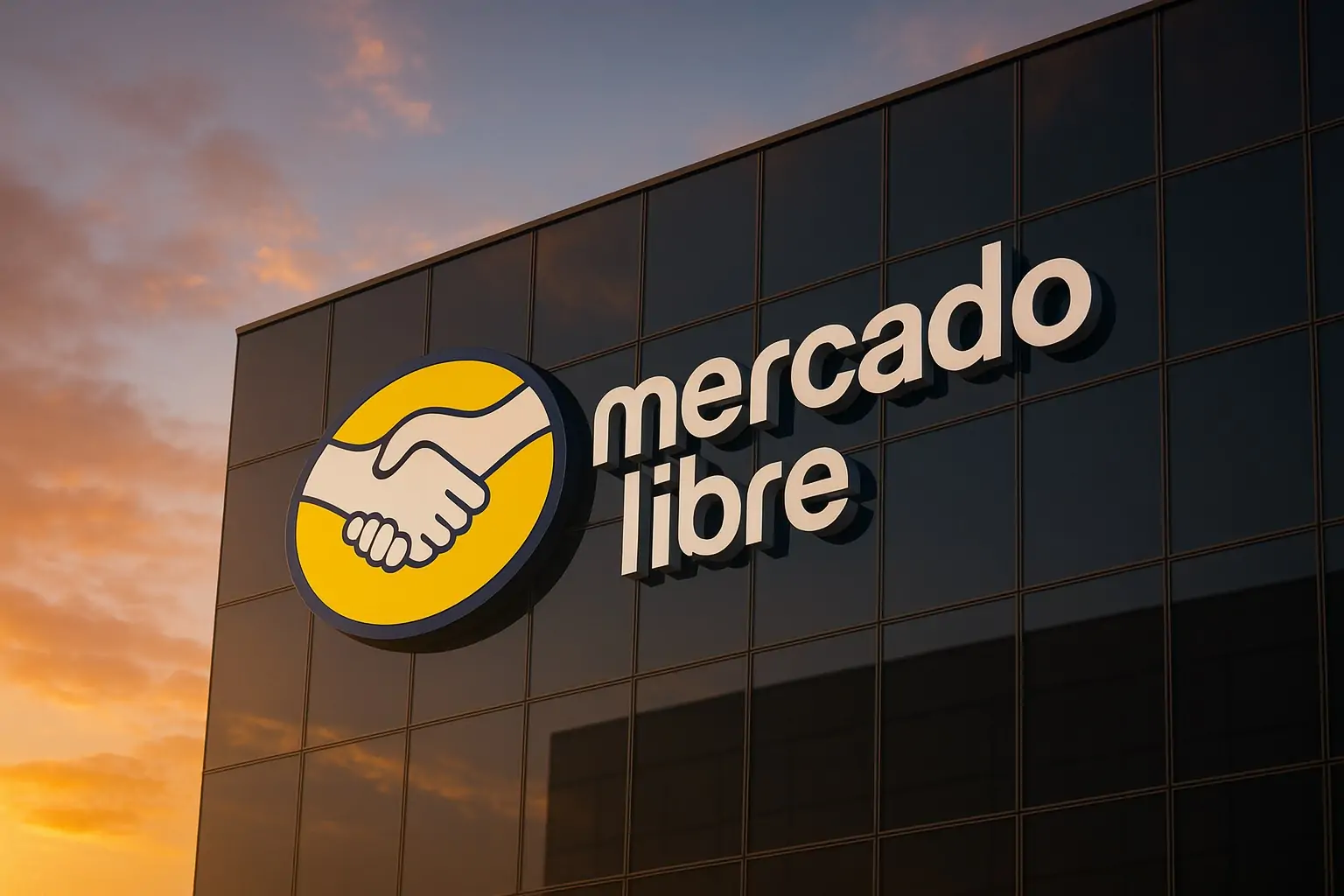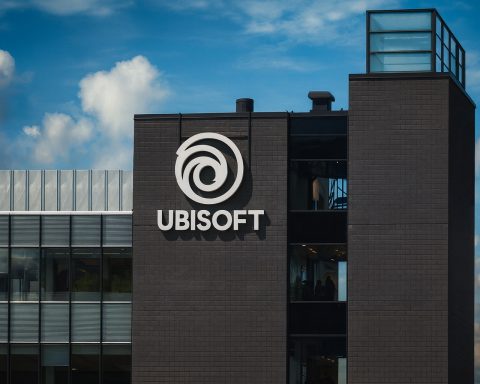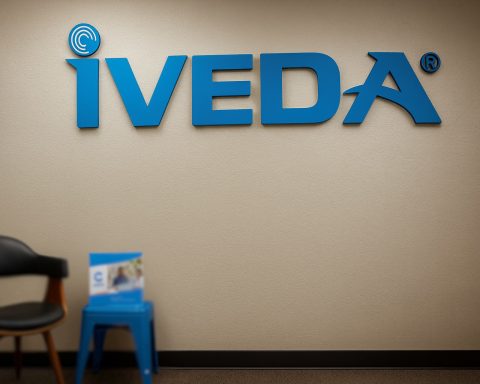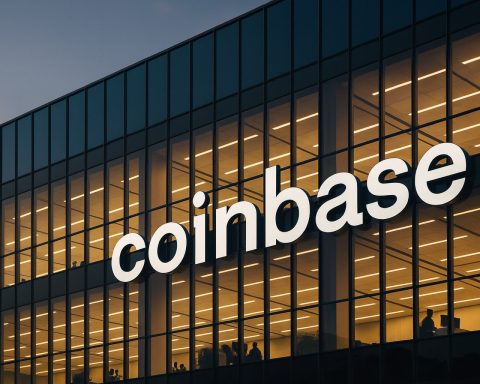MercadoLibre (MELI) stock is whipsawing around $1,900 as new 13F filings show hedge funds reshuffling positions and analysts highlight both fintech-driven growth and rising credit risk on November 21, 2025.
Key takeaways for November 21, 2025
- Share price: MercadoLibre closed Thursday at $1,899.75, down 8.5% on the day, with after-hours trades around $1,908.99 on Friday evening. [1]
- Volatility: The stock swung more than 11% intraday on Thursday and is now labeled a “strong sell” by one technical research service, despite being deeply oversold. [2]
- Institutional flows: Fresh 13F-based reports show some funds slashing positions in MELI while others are adding aggressively, with institutional ownership still near 88% of shares outstanding. [3]
- Fundamentals: Q3 2025 revenue grew roughly 39% year over year to about $7.4 billion but margins compressed and EPS missed estimates, largely due to aggressive free‑shipping and macro stress in Argentina. [4]
- Street view: Despite recent weakness, Wall Street’s average 12‑month price target is about $2,854, implying ~50% upside from current levels. [5]
MercadoLibre stock snapshot on 21 November 2025
MercadoLibre (NASDAQ: MELI) comes into Friday’s session after a bruising Thursday. Data from StockInvest and MarketScreener show the shares fell 8.54% on November 20, dropping from $2,077.18 to $1,899.75, with an intraday range between about $1,897 and $2,108 – a swing of roughly 11.1%. [6]
Over the last:
- Week: the stock is down about 6–7%
- Current month: down around 18%
- Three months: down almost 19%
- Year to date: still up roughly 12% thanks to earlier gains in 2025. [7]
MarketBeat’s snapshot of MELI as of Friday lists: [8]
- Last quoted around: $1,899.75 (regular session)
- Market cap: about $96 billion
- P/E ratio: ~46x
- PEG ratio: ~1.6
- 1‑year range: roughly $1,646 – $2,645
- Balance sheet: current ratio around 1.2, debt‑to‑equity about 0.6, indicating moderate leverage
In extended trading, Public.com shows after‑hours transactions at about $1,908.99 as of 8:00 p.m. ET on November 21, with trades between $1,898.53 and $1,924.98 – a modest bounce after Thursday’s steep drop. [9]
From a pure chart perspective, StockInvest describes MELI as trading in the lower end of a wide, falling short‑term trend, down more than 10% over the last 10 days. Their system highlights: [10]
- Sell signals from both short‑ and long‑term moving averages
- A “strong sell” technical rating
- RSI14 around 11, signaling it is heavily oversold, which sometimes precedes short‑term rebounds
In other words, the market is conflicted: fundamentals are strong, but sentiment and technical signals are fragile.
Today’s big story: hedge funds and banks reshuffle MELI exposure
A cluster of new 13F‑based articles released on November 21, 2025 highlights how actively institutions have been trading MercadoLibre shares.
Who is selling?
- Entropy Technologies LP
- Cut its MELI stake by about 49.9% in Q2.
- Now holds 2,802 shares, valued at roughly $7.3 million at the time of the filing. [11]
- Greenland Capital Management LP
- Slashed its position by around 93.7%, selling 1,811 shares and leaving just 122 shares worth about $319,000. [12]
- Ensign Peak Advisors
- A separate MarketBeat alert says Ensign Peak reduced its MELI stake, though the details are behind a rate‑limit wall. The headline confirms they are among the recent sellers. [13]
- Raiffeisen Bank International
- Earlier this week, MarketBeat reported that Raiffeisen also trimmed its holdings, even as it highlighted MELI’s 41% return on equity and ~39.5% revenue growth in the latest quarter. [14]
These reductions are likely a mix of profit‑taking after a multi‑year run and risk management following October’s earnings volatility.
Who is buying?
The same batch of filings also shows notable new or increased positions:
- TD Waterhouse Canada Inc.
- Boosted its MELI stake by 46.5% in Q2.
- Now owns around 3,945 shares, worth roughly $9.8 million at the time of the filing. [15]
- FineMark National Bank & Trust
- Initiated a new position of 182 shares, valued at about $476,000. [16]
MarketBeat notes that institutional investors collectively control roughly 87–88% of MercadoLibre’s float, underscoring how much the share price is driven by professional money managers. [17]
The headline message from today’s 13F‑driven news: there is no uniform institutional verdict on MELI. Some funds are exiting or sharply reducing exposure, while others are using the pullback to add.
Earnings backdrop: rapid growth, margin pressure
Today’s debate over MercadoLibre’s valuation sits squarely on the back of its Q3 2025 results, released on October 29.
According to Reuters and company‑level summaries: [18]
- Net revenue: about $7.4 billion, up ~39% year on year, beating analyst expectations (around $7.2B).
- Net income: roughly $421 million, up 6% vs. last year but below consensus (~$481M).
- Operating margin (EBIT): about 9.8%, the lowest since Q4 2023, reflecting heavy investment and shipping subsidies.
- GMV (gross merchandise volume): up ~35% in constant currency, with Brazil showing around 34% GMV growth after free‑shipping changes.
- Fintech (Mercado Pago):
- Loan book up about 83% year on year to $11 billion.
- 15–90 day delinquency ratio improved to ~6.8% from 7.8%.
- Total payment volume from acquiring operations reached roughly $47.7 billion for the quarter.
Management has been explicit that it is willing to accept near‑term margin compression to seize market share in logistics, speed, and payments — especially in Brazil, its largest market. [19]
In June, Reuters reported that the company lowered the free‑shipping threshold in Brazil from 79 reais to 19 reais, effectively making most items eligible for free delivery. The shipping discounts are also being shared with sellers, with some costs cut by up to 40% to counter competition from Shopee, Amazon and Temu. [20]
This aggressive strategy is fueling top‑line and user growth but feeds the current narrative split:
- Bulls see scale and network effects that will eventually support higher margins.
- Bears worry that a combination of richer benefits, bigger credit books and macro stress (especially in Argentina) will keep profitability under pressure for longer.
Fresh research today: bulls vs bears on MELI
Morningstar: network effects and “one‑stop” ecosystem
A new Morningstar report published today argues that MercadoLibre has built itself into a “one‑stop solution” for Latin American commerce, now extending that model to offer a similarly broad suite of services in payments and financial services. [21]
Key points from that view:
- Combined strength in marketplace, logistics, digital payments and consumer credit deepens its economic moat.
- In markets where e‑commerce penetration still sits in the mid‑teens as a percentage of total retail, MELI has years of runway as offline spending moves online. [22]
- Heavy investment in logistics infrastructure and technology is seen as value‑creating, not purely dilutive, over a multi‑year horizon.
Seeking Alpha: “recent dip is a gift” and 2026 re‑rating thesis
A separate Seeking Alpha article, also out today, characterizes the sharp recent pullback as a buying opportunity. It highlights that: [23]
- Revenue is still growing at nearly 40% year on year.
- Both the e‑commerce and fintech segments are expanding rapidly with strong user adoption.
- While margins are under pressure now, the author argues that fintech growth and eventual operating leverage could set the stage for a valuation “re‑rating” in 2026, assuming macro conditions stabilize.
In other words, this camp believes the market is overreacting to a short‑term earnings miss and underappreciating the structural growth story.
Zacks & others: growing credit book, growing risk
Not all recent research is upbeat. A Zacks‑sourced piece syndicated via Yahoo Finance warns that MercadoLibre’s surging credit portfolio plus intensifying competition from Sea Limited and Nu Holdings is raising the company’s risk profile. [24]
That analysis notes:
- The Q4 2025 EPS consensus estimate has been cut to about $11.85 per share, down 18.7% over the last 30 days.
- That revised figure implies roughly a 6% year‑over‑year decline in earnings per share. [25]
The takeaway from this side of the Street: MELI’s credit expansion and margin compression could cap near‑term earnings, even if volumes stay strong.
Consensus: “Moderate Buy” with big upside — on paper
Despite the mixed tone of individual notes, MarketBeat’s compilation of 17 analyst targets shows: [26]
- Average 12‑month price target:$2,854.71
- High target:$3,500
- Low target:$2,300
- Consensus rating: roughly “Moderate Buy” (majority Buy, a few Hold ratings)
With the stock trading around $1,900, that average target implies about 50% upside — though the spread between the high and low targets reflects real disagreement about execution and risk.
Technical and options picture: volatility is the keyword
Chart‑based views
StockInvest’s technical analysis (updated November 20) is blunt: [27]
- MELI has no clear nearby volume support below current prices.
- Both short‑ and long‑term moving averages flash sell signals, and the long‑term average now sits above the short‑term one.
- A previous pivot top from late October has already led to a drop of nearly 20%, and their system expects further weakness unless a new bottom forms.
- Over the next three months, their model projects a likely price range of roughly $1,599 to $1,932, implying potential downside bias from current levels.
At the same time, the extremely low RSI suggests the stock is heavily oversold, which can sometimes precede sharp counter‑trend rallies.
Options and implied volatility
In the options market, activity and pricing underline just how uncertain traders are about where MELI goes next:
- Quantcha estimates that, for November 21 expiry, MERCADOLIBRE options embed an implied volatility of about 39.5%, with a roughly 68% probability that the stock finishes in a wide band around $2,133–$2,550 around that horizon. [28]
- Another options analytics source, OptionCharts, puts overall MELI option IV closer to 43% with an elevated IV rank, reinforcing the idea that the market is pricing large potential moves in either direction. [29]
Together, this paints a picture of a stock that may be fundamentally attractive to many analysts but is also a magnet for traders, with volatility levels that can magnify both gains and losses.
Strategic 2025 moves and leadership transition: the bigger picture
While today’s headlines focus on the stock chart and 13F flows, the underlying corporate story in 2025 is one of heavy investment and leadership evolution.
Massive capex across Latin America
This year, Reuters and Bloomberg‑style coverage have highlighted MercadoLibre’s record spending plans:
- Brazil: plans to invest roughly 34 billion reais (~$5.8B) in its largest market in 2025, a near 48% jump in spending versus the prior year, targeting logistics, technology, banking and advertising. [30]
- Mexico: a planned $3.4 billion investment for 2025, focusing on tech, infrastructure and financial services expansion. [31]
- Argentina: plans to invest about $2.6 billion this year as the local business rebounds. [32]
These figures come on top of years of escalating capex and logistics build‑out, including new warehouses, expanded delivery networks and even a growing electric‑vehicle fleet for last‑mile operations.
This is the backdrop for today’s debate: investors are being asked to tolerate choppy quarterly margins in exchange for what management believes is a dominant long‑term position across Latin American e‑commerce and fintech.
Moving the U.S. legal home from Delaware to Texas
In April, MercadoLibre’s board proposed redomesticating its U.S. legal domicile from Delaware to Texas, subject to shareholder approval. [33]
According to the company’s filing summarized by Reuters:
- The board believes Texas corporate law offers more predictable, codified protections for business judgments, which it views as important for an “innovative company.”
- The vote requires approval from a majority of shareholders and could invite legal challenges if contested.
- Some analysts see the move as part of a broader trend of large tech‑adjacent firms reassessing Delaware, and potentially as a positioning advantage versus certain Asian e‑commerce rivals facing new tariffs in Mexico. [34]
CEO transition: Galperin steps back, Szarfsztejn steps up
Another major 2025 storyline is governance. In May, Reuters reported that founder and long‑time CEO Marcos Galperin will step down as CEO at year‑end after 26 years, moving to the role of executive chairman. Ariel Szarfsztejn, currently head of commerce, is set to become CEO on January 1. [35]
Key details:
- The market initially reacted calmly; shares actually closed at a record high on the day of the announcement.
- Analysts at Santander called the change a “natural progression”, not a strategic overhaul. [36]
For investors looking at today’s volatility, this smooth planned transition suggests continuity in long‑term strategy, even as day‑to‑day execution moves from the founder to his chosen successor.
What today’s news means for MercadoLibre shareholders
Putting all of November 21’s moving pieces together:
- Price and volatility
- MELI is trading around $1,900, well below its 2025 highs and its analyst price targets, after a steep, high‑volume drop on Thursday. [37]
- Technical indicators show a downtrend and extreme oversold conditions, while option markets price in large future swings.
- Fundamentals
- The company is still delivering high‑30s revenue growth, double‑digit GMV expansion, and rapid fintech scaling across payments and credit. [38]
- Margins are under pressure from free shipping, logistics investment, and macro headwinds in Argentina, and some earnings estimates have been revised lower. [39]
- Institutional behavior
- Today’s 13F‑driven headlines show no monolithic “smart money” stance: some funds are exiting or cutting stakes sharply; others are building or initiating positions. [40]
- Strategic arc
- Massive 2025 investments across Brazil, Mexico, and Argentina, plus structural moves like the proposed Texas domicile and CEO succession, reinforce that management is playing a long game in Latin American digital commerce and finance. [41]
For existing or prospective shareholders, the core trade‑off remains:
Are you comfortable with short‑term earnings volatility, intense competition, and credit risk in exchange for exposure to what is arguably the dominant digital ecosystem in Latin America?
This article is for information and news purposes only and does not constitute investment advice or a recommendation to buy or sell any securities. Always do your own research or consult a licensed financial adviser before making investment decisions.
References
1. stockinvest.us, 2. stockinvest.us, 3. www.marketbeat.com, 4. www.reuters.com, 5. www.marketbeat.com, 6. stockinvest.us, 7. in.marketscreener.com, 8. www.marketbeat.com, 9. public.com, 10. stockinvest.us, 11. www.marketbeat.com, 12. www.marketbeat.com, 13. www.marketbeat.com, 14. www.marketbeat.com, 15. www.marketbeat.com, 16. www.marketbeat.com, 17. www.marketbeat.com, 18. www.reuters.com, 19. www.reuters.com, 20. www.reuters.com, 21. www.morningstar.com, 22. investor.mercadolibre.com, 23. seekingalpha.com, 24. www.zacks.com, 25. www.nasdaq.com, 26. www.marketbeat.com, 27. stockinvest.us, 28. quantcha.com, 29. optioncharts.io, 30. www.reuters.com, 31. www.reuters.com, 32. www.reuters.com, 33. www.reuters.com, 34. www.reuters.com, 35. www.reuters.com, 36. www.reuters.com, 37. stockinvest.us, 38. www.reuters.com, 39. www.reuters.com, 40. www.marketbeat.com, 41. www.reuters.com









